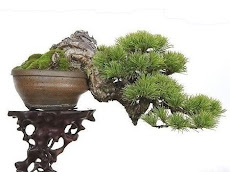
Photo : Home and Gardening
Story : Herb Daniels
Bonsai trees are diminutive and exquisite examples of larger trees. To keep them small, they spend their lives in shallow containers. Just about any type of tree can be a bonsai. Nurseries and some stores carry beginner bonsai trees, which are just waiting for you to train them into a lovely design. Prior to training a bonsai, it is essential that you understand what is about to take place.
Pointers on Beginner Bonsai Trees
To further develop beginner bonsai trees, some parts of the plants will need to be removed in order to create fine-looking presentations. Beginner bonsai trees have no planned shape when you first get them. Therefore, their future motifs will be entirely up to the whims of their new owners.
It is possible to choose from many bonsai styles. Some of the more popular and less complicated ones include the windswept, cascade, slanting, formal upright, informal upright and the bunjin designs. Hobbyists about to grow beginner bonsai trees are able to select any style they will be happy with. While making the purchase, notice if a certain bonsai tree already has a tendency toward a specific shape. Does it have a crooked trunk or branches that suit a particular form? Carefully taking the time to observe the features of a new bonsai can be greatly rewarding, as well as inspiring.
Invest time in learning how to prune both the crown and the roots of your beginner bonsai trees. Pruning implies cutting off specific parts to encourage more growth or to engender a hearty plant. Repotting and pruning of the beginner Bonsai trees also encourage them to grow faster. Further, you will need to replace the container of your bonsai repeatedly every one or two years to stimulate continued health and in order to access the roots for pruning. This will also encourage faster growth, which can mean more pruning will be needed.
Since many varities of bonsai trees which have been shipped from tropical or subtropical regions, are not able to withstand cold and the shallow bonsai containers can freeze when left outside in winter snow and cold, it is recommended that you bring your beginner bonsai trees inside during the cold season in your area.
To prevent the soil from drying out too quickly, it is best to place beginner bonsai trees away from inside heat sources such as radiators. The container can also be placed on top of some pebbles in a shallow water dish to keep the humidity up around the plant. The container should not be directly in the water, just above it. Also, make sure the bonsai plants are not left too close to windows, because excess cold can stress a tree to the point of death. The more research you do to duplicate the conditions of a bonsai tree's origins, the easier it will be to promote its healthy survival for many years to come.
This is all you'll need to remember to care for your beginner bonsai trees, trim the plant regularly, provide water and high humidty, warmth, and occasional feeding, for best growth. Following this plan will bring you many years of satisfying bonsai gardening time.
About Author Herb Daniels :
Herb Daniels is an amateur gardener living on the East Coast of Florida puttering around in his garden as time and weather allows. Herb has a web site where he posts a few articles and other information about Beginner Bonsai Trees http://www.bonsaiplantingtips.com
Article Source: http://www.BharatBhasha.com
Article Url: http://www.bharatbhasha.com/gardening.php/71119













